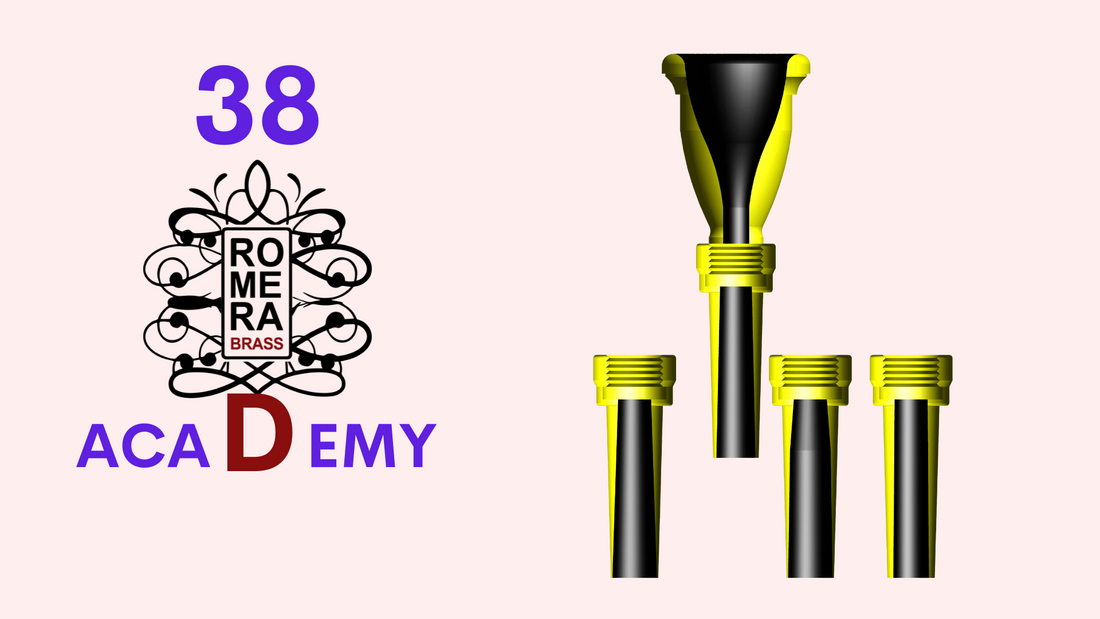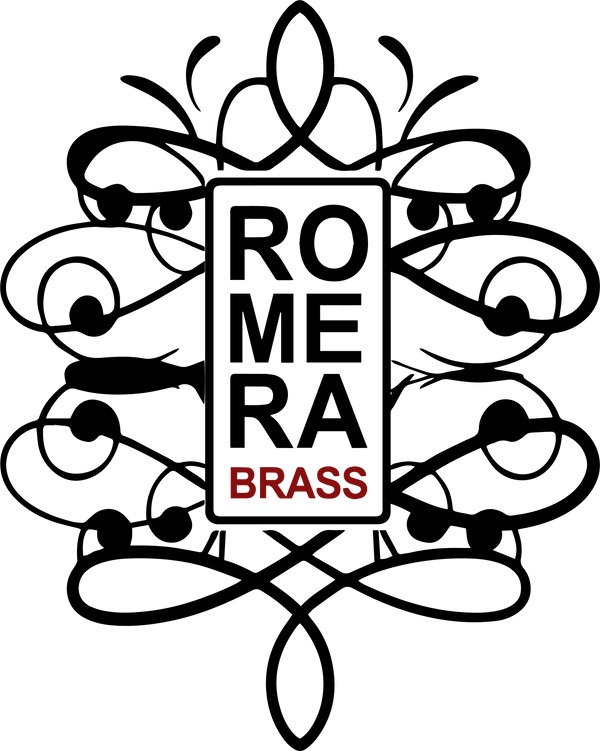
38. Which backbore is better for each type of cup?
Share
NOTE: Transcription of the video text, you can translate it into other languages with a translator.
Greetings, Metaheads,
In this episode number 38 of Romera Brass ACADEMY, we answer another frequently asked question:
A musician wants to buy a mouthpiece with a specific cup, but they wonder…
What inner backbore is best for that particular cup?
Manufacturers usually pair different standard cup models with an inner backbore that’s roughly proportional to the cup size. The deeper the cup, the larger the throat and inner backbore.
This approach can work, but there’s one variable that manufacturers can never predict, and for me, it’s the most important one:
The musician who will be playing that mouthpiece.
Without further ado, let’s get started!
Almost all standard mouthpiece models, even those with a small cup, have a fairly large inner backbore. They’re designed to make you feel like you can push a lot of air and produce a big sound. This is fine if you can really handle it and blow enough air, but…
What happens when you have to play piano or perform fast staccattos? You already know the answer: it becomes difficult to control, and after a while, everything feels slower and heavier. This means you have to practice twice as much for a poor result.
This way of manufacturing mouthpieces with fairly large air outlets, I believe, is actually the fault of the musicians. For example, many musicians come to my workshop and the first thing they say is:
“I want a mouthpiece with no resistance, one that lets the air flow freely.”
Wrong!
On my website, in the CUSTOM models, you can choose from four different inner backbore models:
• Closed
• Standard
• Open
• Very open
Guess which models I get asked for the most?
Yes, the open and very open ones.
But when musicians come to my workshop for a CUSTOM mouthpiece, I’d say that in almost 90% of cases, I have to close the inner backbore, because they’re playing with a bacbore that’s too open for the amount of air they’re blowing.
Luckily, we now know that the inner backbore is one of the most important parts of the mouthpiece and needs to be balanced with your playing style, air flow, and not just with the cup depth.
Here are some examples to know if you’re using a backbore that’s too open:
1. In the high register, if your high notes sound dull (not necessarily out of tune, but lacking harmonics), the inner backbore might be too large.
2. If your notes are flat in pitch, it’s almost certain that the inner backbore is too big for you.
3. If you struggle with fast staccattos, needing extra tongue and air to hit each note, and by the fourth staccatto, it goes from ta-ta-ta to za-za-za, making it hard to keep tempo, it’s a clear sign that the inner backbore is too open.
When you come to my workshop to craft your CUSTOM mouthpiece, besides the four models you can choose from on my website, I have many more to try out. I can also adjust it to fit your playing style—that’s one of the benefits of coming to my workshop.
In this episode, we’ve learned that the inner backbore doesn’t depend on the cup depth. Instead, it must be matched to your playing style, air volume, and air speed.
I hope to see you soon at my CUSTOM mouthpiece workshop.
I’m Toni Romera, and I look forward to your questions and comments.

